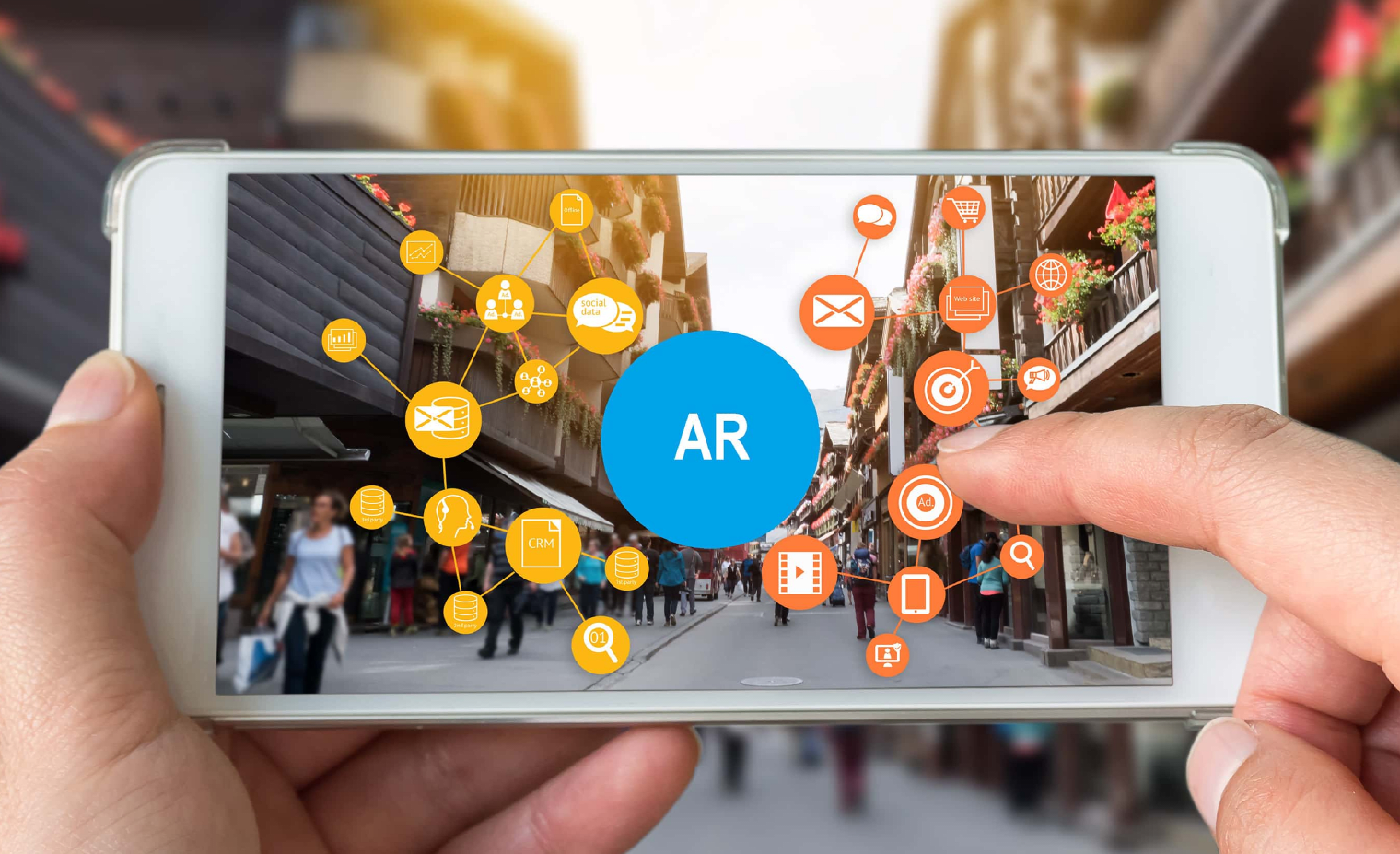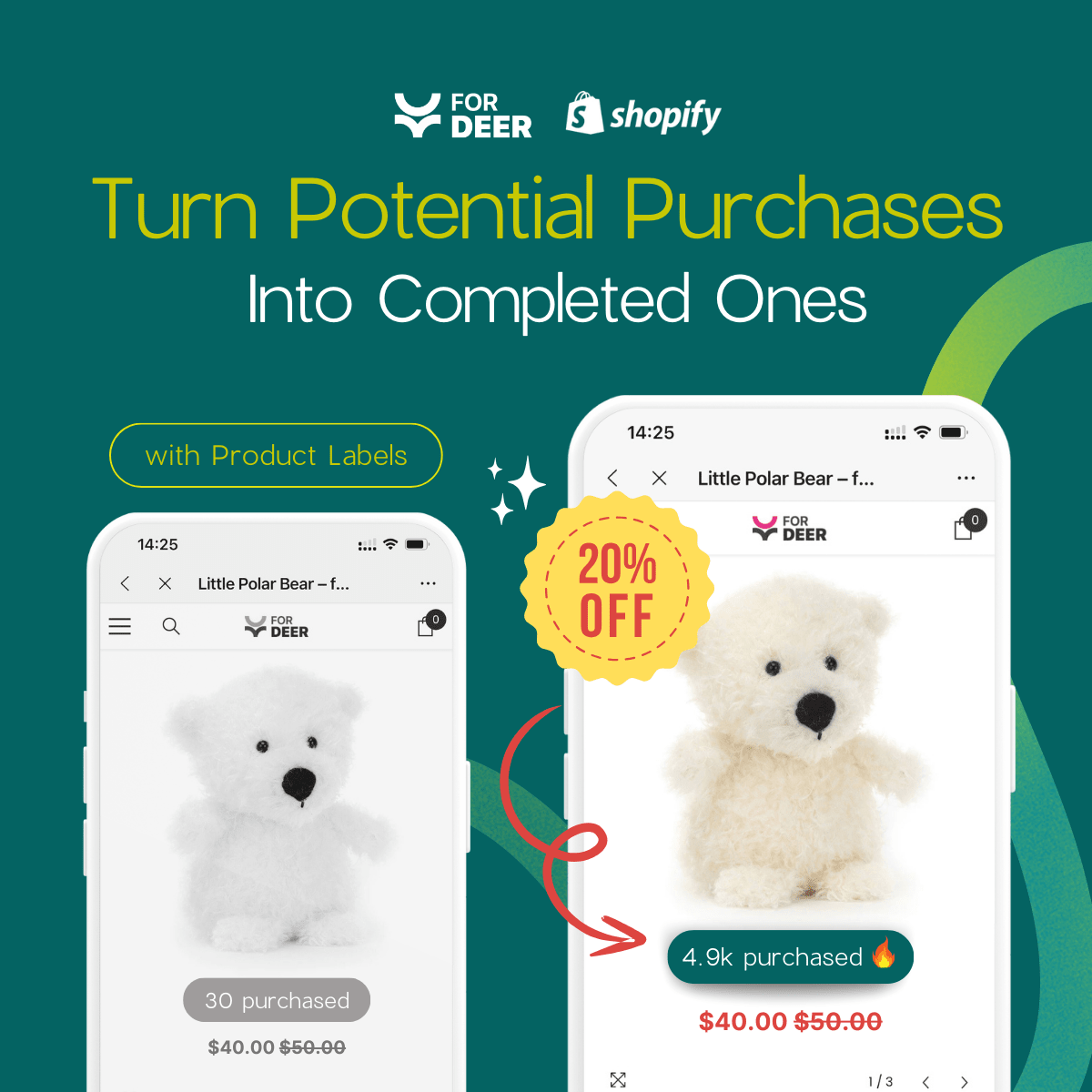The Use of AR Technology on Product Labels

You are an online business looking for innovative ways to capture the attention of your target audience, right? In today’s world, one such groundbreaking technology that has reshaped the marketing game is Augmented Reality (AR). Have you ever thought of the combination of AR and product labels?
In this blog post, Fordeer will dive into the intersection of AR technology and product labels, exploring how this combination revolutionises how consumers perceive and interact with products.
Understanding the use of AR technology on product labels
The power of AR
Augmented Reality (AR) is a technology that overlays digital information, such as images, videos, or 3D models, onto the real-world environment. Unlike Virtual Reality (VR), which immerses users in a completely simulated environment, AR enhances the real world by adding digital elements. AR is typically experienced through devices like smartphones, tablets, AR glasses, or specialized AR headsets.

Augmented Reality, often associated with gaming and entertainment, has found its way into the realm of product marketing. AR enhances the user's perception of reality by adding digital elements to the physical world.
When applied to product labels, AR opens up a world of possibilities for creating captivating and informative experiences. Consumers can use their smartphones or AR-enabled devices to unlock additional content, such as product details, usage instructions, or even virtual try-ons, creating a memorable and personalized connection with the brand.
The evolution of product labels
Product labels are informative tags, stickers, or markings attached to products or their packaging. These labels serve multiple purposes, providing essential information about the product and aiding in brand identification. Product labels are a crucial component of marketing and communication, helping consumers make informed decisions and understand the key attributes of the item they are considering purchasing.
Product labels have come a long way from serving merely as information carriers. Initially designed for regulatory compliance and brand identification, labels are now considered valuable tools for engaging consumers. As the demand for more interactive and immersive experiences grows, businesses turn to AR technology to breathe new life into their product labels.
Benefits of AR-powered product labels
Enhanced consumer engagement
Nowadays, businesses have numerous avenues to connect with their customers online and offline. Enter augmented reality packaging, a valuable asset for savvy marketing strategists looking to introduce fresh and creative approaches.
Thanks to AR, products can be infused with immersive experiences encompassing videos, animations, models, and more. This captivates customers and encourages them to spend quality time engaging with the brand while being entertained.
Consider, for instance, a stationary company or publishing house incorporating an AR-enabled gaming experience on products like pencil stands and notebooks. The game need not be overly complex—perhaps a car race or a side-scrolling adventure.
In contrast to a virtual showroom, customers simply scan the product to kickstart this delightful AR encounter. This serves as an incentive for repeat purchases and positions the company's product as a standout choice among competitors. AR-powered labels provide an immersive experience, capturing consumers' attention and encouraging them to interact more with the product.
Increased information accessibility
Augmented Reality (AR) technology is a remarkable avenue for brands to effortlessly provide in-depth insights about their products, eliminating the need for cluttered physical labels. In this delightful fusion of innovation and convenience, consumers can seamlessly explore a wealth of information, ranging from intricate product specifications to valuable user reviews and beyond.

Gone are the days of deciphering tiny text or searching for additional details elsewhere – AR-enhanced labels bring the information directly to the fingertips of consumers. This user-friendly approach not only simplifies the consumer experience but also encourages a sense of empowerment, allowing individuals to make informed decisions with ease. By leveraging AR to untether product information from the confines of a traditional label, your brands can foster a more engaging and transparent connection with their audience, emphasizing a commitment to delivering not just products but enriching and interactive experiences.
Virtual try-before-you-buy
In a world where beauty products, fashion ensembles, and home decor hit the headlines, the magic of AR labels unfolds to offer a delightful experience to consumers. Imagine virtually trying on that perfect shade of lipstick, donning the latest fashion trends, or envisioning how that stylish piece of furniture seamlessly fits into your living space – all before making that final purchase decision.
Thanks to the wonders of Augmented Reality, these virtual try-ons bring a touch of personalized charm to your shopping journey. By leveraging AR technology, brands empower consumers to visualize and interact with products in an engaging and interactive manner.
This not only adds a delightful layer to the shopping experience but also serves as a practical tool, allowing individuals to make more informed and confident decisions. So, whether your customers exploring the world of beauty, fashion, or home decor, let AR labels be their virtual companion, guiding them through a personalized and enjoyable shopping adventure where every purchase feels just right.
Brand storytelling
Augmented Reality (AR) not only brings products to life but also serves as a friendly storyteller for brands, adding a touch of warmth to the consumer experience. With this innovative technology, brands can weave captivating narratives that go beyond the confines of traditional marketing.

Moreover, AR empowers brands to share their core values in an approachable yet formal manner, fostering a deeper connection with consumers. These digital narratives, facilitated by AR-powered labels, create a unique and immersive storytelling platform.
Whether it's highlighting the craftsmanship behind a product or conveying the brand's commitment to sustainability, AR enables brands to communicate their story in a more personable and engaging way. In essence, augmented reality transforms product labels into dynamic canvases that tell tales, connecting consumers with the heart and soul of a brand in a manner that is both friendly and formal.
Real-time updates
In fostering a more personalized connection with consumers, brands can seamlessly deliver real-time updates and exclusive promotions through Augmented Reality (AR) technology. This innovative approach not only ensures that customers stay well-informed about the latest happenings but also provides them with immediate access to enticing offers.
By harnessing the power of AR, brands create an interactive and dynamic channel, making the consumer experience both engaging and informative. This commitment to keeping customers in the loop demonstrates a dedication to providing value beyond the mere transaction, fostering a sense of loyalty and trust.
In an era where staying connected is paramount, the integration of AR not only enhances the accessibility of information but also transforms the brand-consumer relationship into a mutually beneficial, ongoing conversation. Embracing the potential of AR for real-time updates and promotions is not just a marketing strategy; it's a friendly invitation for customers to be an integral part of the brand's exciting journey, ensuring they are always at the forefront of the latest offerings.
Drawbacks of using AR technology on product labels
In optimizing the impact of Augmented Reality (AR) on product labels, it's important to consider the diverse technological landscape that consumers navigate.
Technological barriers
The success of AR experiences hinges significantly on the capabilities of individual devices. While newer smartphones and technologically advanced gadgets seamlessly deliver the intended interactive engagement, older models or those operating on outdated software may encounter challenges in providing a smooth AR experience.
In a rapidly evolving technological ecosystem, where innovations emerge at a staggering pace, the compatibility of AR features with various device specifications becomes a pivotal factor. The friendly allure of AR-enhanced product labels may lose some of its lustre when faced with the limitations of older devices.
Consequently, it is incumbent upon businesses to strike a balance between adopting cutting-edge AR applications and ensuring inclusivity for consumers across a spectrum of devices. Moreover, understanding the potential hurdles posed by outdated technology underscores the need for a customer-centric approach.
By considering the diverse range of devices in use, businesses can implement strategies to enhance accessibility and inclusivity. This not only fosters a more engaging and user-friendly experience but also demonstrates a commitment to reaching consumers on all technological fronts.
Cost of implementation
The costs associated with the development of AR-enabled labels, encompassing both the intricacies of software creation and the creative aspects of design, can be perceived as prohibitive for enterprises with limited financial resources. This economic reality implies that, for some smaller businesses, there exists a potential barrier to entry into the realm of AR-enhanced product labelling. However, it's important to view this challenge as an opportunity for strategic planning and phased implementation.

By adopting a measured approach, businesses can explore alternative funding avenues, partnerships, or phased rollouts, gradually easing into the incorporation of AR technology. This not only mitigates the immediate financial burden but also allows for a more seamless integration that aligns with the business's growth trajectory. Furthermore, the initial investment should be seen as an investment in the brand's future competitiveness and market relevance. Your job here is to ensure that the integration of AR technology aligns not only with the brand's financial realities but also with its overarching business objectives and growth aspirations.
Privacy concern
While AR offers an engaging and dynamic interaction with product labels, it's important to acknowledge that this interactivity may involve the gathering of user data. Understandably, privacy concerns can emerge if consumers feel uneasy about sharing personal information within AR applications.
This potential apprehension may influence their level of comfort and, consequently, impact their willingness to actively engage with AR-enhanced product labels. In the quest for a seamless and secure user experience, businesses must prioritize transparency and user consent regarding data collection practices.
This ensures that consumers are well-informed about how their information will be utilized within the AR context. By implementing robust data protection measures and communicating the benefits of data sharing, businesses can cultivate trust with their audience, encouraging a more positive reception of AR technology.
Maintenance challenges
Regular updates not only cater to the evolving technological landscape but also demonstrate a brand's dedication to offering customers an ever-enriching experience. A proactive approach to technical problem-solving is paramount in preserving the allure of AR-enhanced labels.

Swiftly attending to any glitches or hitches ensures that users consistently encounter a smooth and enjoyable interaction with the augmented elements. This commitment contributes to the overall satisfaction of consumers, fostering a positive perception of the brand and its innovative endeavors.
Furthermore, the dynamic nature of consumer preferences and technological advancements necessitates a strategic and systematic approach to content updates. By injecting fresh and relevant content into AR experiences, businesses not only retain consumer interest but also capitalize on opportunities to convey new information, promotions, or engaging narratives.
Final thought,
The integration of AR technology with product labels represents a paradigm shift in the way businesses communicate with consumers. By creating interactive, informative, and memorable experiences, AR-powered labels have the potential to elevate a brand's visibility and resonate more profoundly with its target audience.
As technology continues to advance, embracing AR in product labelling is not just a trend but a strategic move toward staying relevant in the ever-evolving landscape of consumer preferences. Follow Fordeer Team for more updates!
For more invaluable information, stay updated with Fordeer Team!
- Install Fordeer Apps for Free
- Get immediate assistance by chatting with us.
- Join Fordeer Commerce Community for fresh app updates, expert tips, and private deals.











